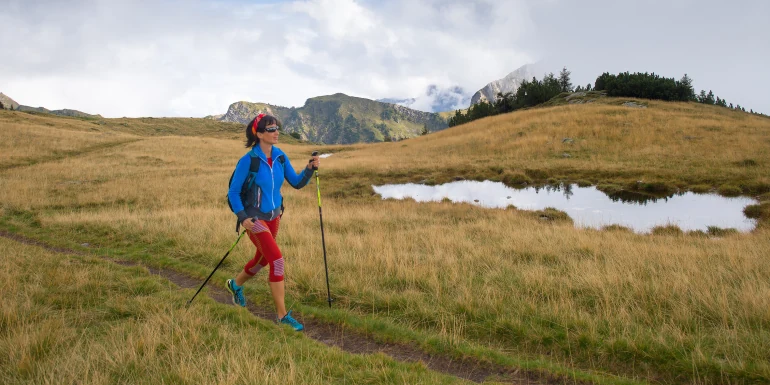Fitness trackers: how you can benefit
Find out which fitness trackers were rated “good” overall and what functions they have. Moreover, you can now connect Garmin and Fitbit trackers to our Helsana+ app. We will also clarify how much activity really is healthy.
Garmin and Fitbit are just two of the numerous fitness trackers on the market. The functions are just as numerous: step counter, pulse measurement, calorie consumption measurement, heart rate or distance via GPS. The small devices worn on the wrist measure our daily activity. They encourage us to engage in more sporting activities, thus improving our training and fitness.
Which is the best activity tracker?
Kassensturz together with the Gesundheitstipp magazine arranged for ten of the most sold fitness trackers to be tested, three of which have a GPS function. The following were tested: measurement accuracy, handling, battery life and the display's scratch resistance. Six of the ten devices were rated “good”, including the Garmin and Fitbit models, for example. The details of the test results are available here (only in German):
Measuring activity without a fitness tracker on your wrist
Wearing an activity tracker on your wrist is practical when you are engaging in sporting activities. If you do not have a fitness tracker, you can also measure your activity with a smartphone. A personal fitness trainer and nutritional adviser is pre-installed on most iPhones: the “Apple Health” app. It collects health data if you so desire and serves as a central data collection point, even for other health apps. The health app counts your steps and the total distance covered, for example. The free “Google Fit” app is available for Android smartphones. The Google app also records your physical activities, calorie consumption or sleeping patterns.
The Federal Office of Sport (FOSPO) has issued the following recommendations based on your age and fitness level:
Children and young people
In addition to their daily activities, school-aged children should exercise for at least one additional hour per day at a medium to high level of intensity. It is important to engage in various forms of exercise and sporting activities. This strengthens the bones, stimulates the cardiovascular system, strengthens the muscles, trains flexibility and improves skills and coordination.
Persons of working age
Spread your activities of medium intensity out over 2.5 hours per week. Suitable activities include fast walking, gardening or cycling. If you prefer activities with a high level of intensity, the duration is 1 ¼ hours per week. For instance, swimming or running because you breathe faster and sweat easily.
Women and men of retirement age
People who exercise a lot in old age can prevent accidents. In old age, it is important to exercise regularly, even if the ability to exercise is limited for health reasons. Recommended weekly amount of exercise: 2.5 hours of medium intensity or 1 ¼ hours of high intensity.
Benefit smartly from exercise
We are continuously expanding the Helsana+ partner network. Now you can connect your Garmin or Fitbit activity tracker directly to Helsana+, thus ensuring that the plus points are automatically credited to your account. You can also connect a smartphone app like Google Fit or Apple Health to our app. In order for the automatic credit to be carried out, you have to reach one of the targets per day required for this purpose: 10,000 steps, an average pulse of 110 over a 30-minute period or 150 calories burned in 30 minutes.
Here are the instructions on how to connect Garmin and Fitbit trackers directly to Helsana+. You can also connect Polar or Runtastic devices via Apple Health or Google Fit to Helsana+:
Further information


Newsletter
Find out more about current health issues every month and get all the information you need about our attractive offers from all Helsana Group companies * delivered by e-mail to read whenever it suits you. Our newsletter is free of charge and you can sign up here:
We did not receive your information. Please try again later.
* The Helsana Group comprises Helsana Insurance Company Ltd, Helsana Supplementary Insurances Ltd and Helsana Accidents Ltd.